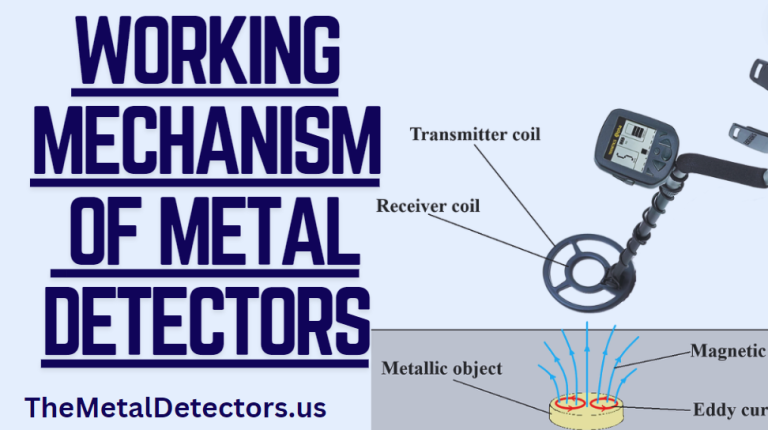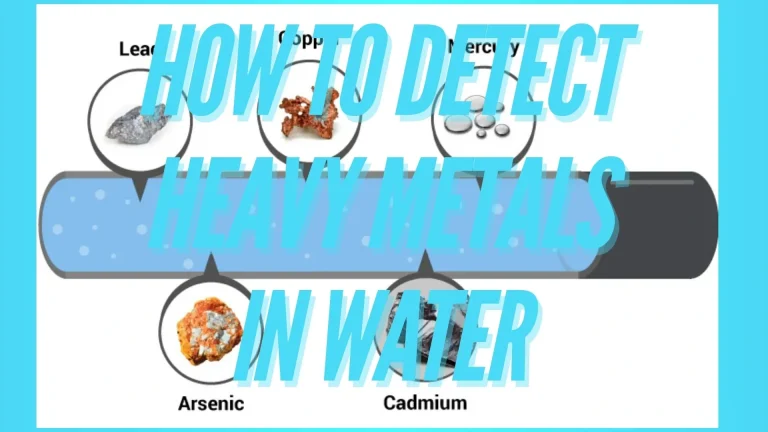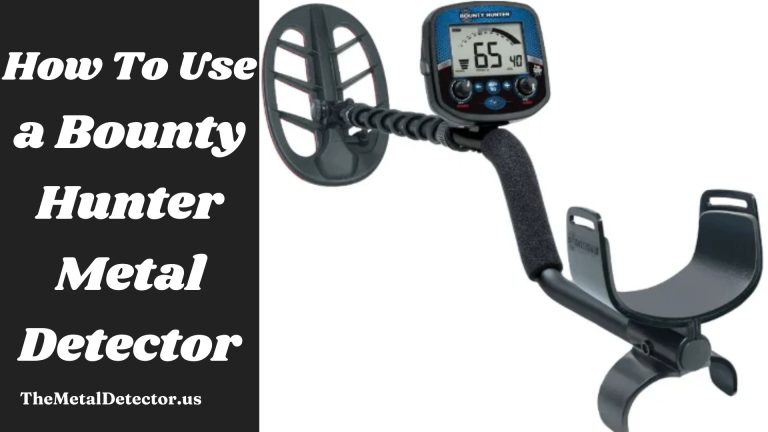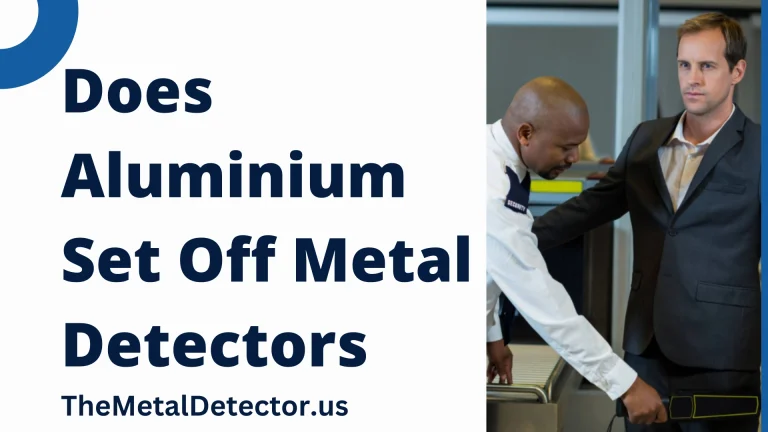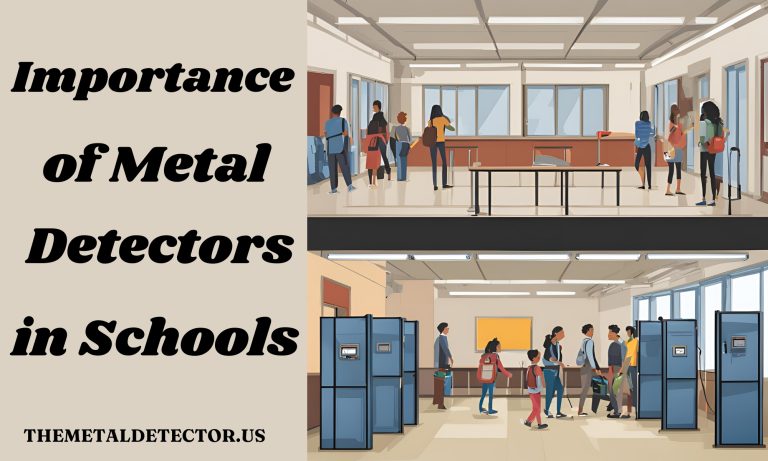How Deep Can a Metal Detector Detect (Detailed Guide 2025)
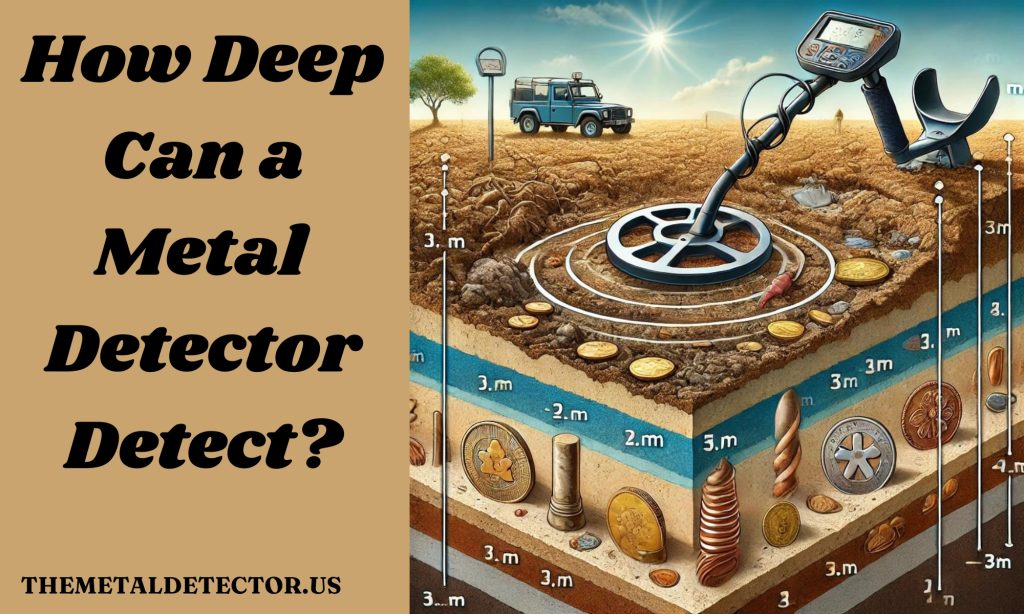
Have you ever wondered how strong the metal detectors you use are at detecting metals under the ground? These thoughts also surrounded me while I was detecting metal. This is a very common and interesting question among metal detector users around the world.
Entry-level Metal detectors can detect up to 6 to 8 inches under the ground. Mid-range metal detectors can detect up to a depth of 8 to 12 inches. The high-level metal detectors have a depth of almost 3 feet for detecting metals, coins, and relics.
Let’s read the article and find out the answer to our question, “How deep can a metal Detector Detect? “
An Introduction to Metal Detection

The introduction of metal detectors explains how metal detectors work. Metal detectors are devices that help us find valuables like gold or metals underground. They have a coil that uses electromagnetic waves to locate valuables underground.
This information gives us an idea of how such devices work perfectly and what kind of metals and valuables they can find easily. There are different types of metal detectors that are used for different purposes. It is simple information to help you understand how these detectors work.
How Metal Detectors Work
A metal detector has a coil that sends an electromagnetic field into the ground to find gold. When it hits any metal, the detector passes through a secondary electromagnetic field from the coil. Then, the detector informs the user by giving an alarm that there is something.
Buy the best metal detectors for beginners from our website
Types of Metal Detectors

There are 3 types of metal detectors according to the technology they use. Each one is described below:
VLF (Very Low Frequency) Detectors
VLFs are very low-frequency metal detectors used for normal purposes only. This type of metal detector is used in small areas to detect metals. It is very sensitive and can only detect small objects.
PI (Pulse Induction) Detectors
PI detectors, also known as pulse induction detectors, are mostly used by the detectors for deep detection in areas like beaches. It is most suitable for deep detection in challenging environments. It is an excellent detector, but it is less capable of distinguishing between metal types.
Multi-frequency Detectors
Multi-frequency detectors have the power of both VLF and PI metal detectors. They use both detector technologies to detect valuables from the ground. They can detect valuables in any environment, and the weather cannot affect their work.
There are many metal detectors used for detecting gold. Check out this article to know more about gold detectors.
Key Uses of Metal Detectors

The key uses of metal detectors are in treasure hunting, archaeology, security scanning, old abandoned construction sites to find missing items, and usually for gold hunting. Every field requires a particular metal detector category to detect in specific areas. So, there are specific detectors for each specific field.
This knowledge provides us with the essential information to understand how metal detectors work and how many categories a metal detector has to perform different tasks. They make our work more easy and efficient with their specialized capabilities and features.
You may also like Top 9 metal detectors to buy in 2024
Key factors affecting metal detection depth

Several factors mostly affect the depth of metal detection. These factors include the size and shape of the metal object, the type of metal, the technology used for detection(VLF, PI, multi-frequency detector), or the ground condition. To know about the question of How deep can a metal detector detect?, we need to understand the factors that affect the depth of metal detection.
Small objects like gold or silver are easily detected even in-depth, while high mineral areas can make it difficult to detect them in depth. Detector settings and ground balance are also important to detect in such areas.
Target Size
Large metals produce strong signals that help us detect objects in deeper areas easily. Small metal objects are difficult to find because they create weak signals that make them harder to find at deeper levels. Large objects like metal pipes or large gold bricks, even if they are in a deep area, can be found easily, but small objects like coins or jewellery are harder to find in depth.
Detector sensitivity is also essential for finding small objects. High-sensitivity detectors are better for finding small objects, but they have limited depth, while lower-sensitivity detectors are less effective for small objects but can detect large objects from depth. Highly mineralized soil areas also make it difficult to find small objects in the depth.
Search Coil Size
Search coil size plays an important role in metal detectors’ deep detection. Large coils can detect in deeper areas and targets and cover more ground than smaller coils. However, they miss small items to scan from the ground and struggle in areas with a lot of metal scraps.
On the other hand, a smaller coil provides more accuracy and sensitivity to small objects in deep areas. They are better at finding small gold or items from tight spaces, so they are mostly used in caves. However, they are not able to detect in deep areas.
In short, large coils are most suitable for detection in deep and wide searching, while small coils are best for surface-level findings.
Sensitivity Settings
The metal detector’s sensitivity controls the signal’s strength and how it reacts to different objects. Adjusting the right sensitivity is very important for detection in deeper areas. So, there are two types of sensitivity for metal detection.
High sensitivity can make the detector more responsive, helping us find deeper and smaller objects. However, it can also detect unwanted objects deeper, like mineralized soil or junk metal. So, it can cause a lot of false alarms and make it difficult to find the important things.
Low-sensitivity detection is more accurate because it reduces unwanted signals coming from the deeper soil. It can find metals in difficult soil conditions but cannot detect small objects from the deeper ground.
Frequency
Frequency in a metal detector is about how often a detector sends its electromagnetic signals to the objects. It is measured in hertz (HZ), and its working is as follows:
High-sensitivity detectors send signals faster to objects buried underground. This is very helpful for finding small objects like gold, jewellery, and coins, and it also works very well in suitable areas. However, it doesn’t go very deep, making deep findings difficult.
Low-frequency detectors send signals slowly to the object buried underground. It can help us to find larger objects buried in the depths of the ground. It may not be able to find small objects or small coins buried underground and may not be able to distinguish between different metal objects.
Environment and Ground Clearance
The environment is the most crucial factor in metal detection, whether on a beach, forest, park or in weather conditions. Different environments affect the detectors’ workings. Detecting on a beach is different from detecting in a forest because of sand, water, and possible interference from other objects.
Ground clearance means keeping the search coil at the proper distance from the ground while scanning. It should be close to the ground but not touching it. Proper ground clearance helps us detect the area perfectly.
Read More: Where to use a metal detector
Tips for Greater Depth Detection

Here are some great tips for depth detection that can help you find things buried deeper in the ground with the metal detector:
Use a Larger Coil
Using a larger coil can help you find objects buried at a higher depth. It sends a wide range of electromagnetic fields to the ground, making it easier to find objects buried deeper in the ground.
Bigger coils are best for open areas like beaches or fields where you are searching for large targets deeper in the ground. A bigger coil might miss small objects from depth.
Adjust Sensitivity Settings
Adjusting sensitivity settings by increasing them to high can help you find metal objects from depth. By increasing sensitivity, your metal detector picks up weak signals from objects deeper into the ground. High sensitivity can also cause interference from ground minerals.
Increased sensitivity can be very helpful for detection in areas with low-ground minerals, such as open fields or soil with low minerals. It can help you reach objects buried in the depths.
Lower Frequency
Using a lower frequency setting can help your metal detector reach deeper into the ground, especially for bigger objects. Lower frequencies are best for searching large targets like treasures, remains, or buried objects. However, they may not be able to find small objects like coins or jewellery.
Proper Ground Balance
Proper ground balancing is also necessary to find objects buried in depth. Ground balance settings can help a detector ignore the natural minerals in the soil, reducing interference and allowing you to focus on your findings. Proper ground balance is essential for detecting deeper targets, especially in mineralized soil.
Always adjust the ground balance when you start detecting in a new area or in different soil conditions. If you don’t set it correctly, the detector will give you wrong signals or also miss targets.
Slow and Steady Sweep
Move the search coil slowly, steadily, and close to the ground. Slow and steady sweeping can give your detector more time to pick up signals from deeper depths into the ground. Sweeping too fast can cause you to miss signals from deeper targets buried in the ground.
Use Headphones
Using headphones helps you hear weak signals that can indicate deep targets, especially in a noisy area. They also help by removing background noises so you can concentrate on your detection. So always use headphones, which will help you find valuables even if you are in a noisy area or have weak signals.
Choose the Right Time and Location
Choosing the right time and location is also helpful in deep detection. For example, soil after rain can increase the detector’s depth capabilities because wet soil can better pass electromagnetic signals. Searching in areas with less trash or interference can also help you detect deeper targets.
Plan your detection time after rain or detect in areas where you have information for more chances of finding hidden treasure. Wet soil conditions can cause more ground noises, so adjusting sensitivity is necessary before detection.
Challenges Faced During Depth Detection
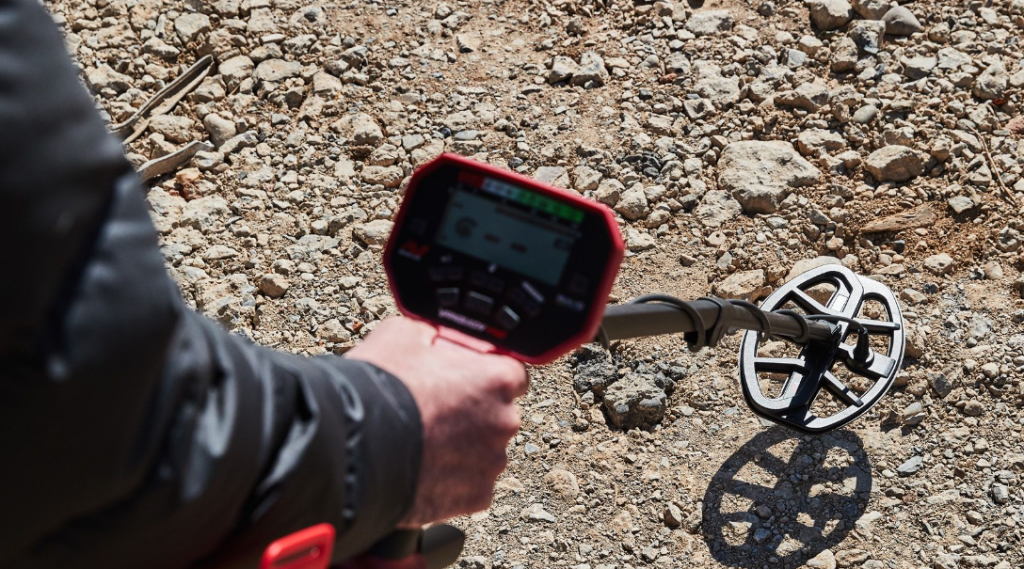
Some factors that may affect the depth of detection for finding the objects that are buried deep underground with metal detectors are the following:
Soil Conditions
Soil with many minerals, rocks, iron, salts, and moisture can also interfere with the signals to detect deep objects in depth. These minerals may also cause false signals or noises that make it harder to detect what you are finding. Rocky or highly dense soil also blocks signals, making it difficult to detect deep objects.
Ground Noise
Areas filled with items like metal trash can create wrong signals and interfere with metal detection. These items, being metals, also confuse the metal detector and make it difficult to detect deep targets. So, make sure to keep this ground trash in your mind while metal detecting to save your precious time and effort.
In addition to this, electrical interference is also a big challenge in metal detection. Nearby electrical resources and machinery generate a loud noise that interferes with the signals of your metal detector. This makes it even harder for you to detect metals there.
Detector Settings
Make sure to set your detector’s sensitivity according to the conditions nearby. If your detector’s sensitivity is set too high, it might pick up unnecessary or small items from the ground, making it harder to focus on the deeper and more valuable targets. Low sensitivity can decrease the detection depth.
In your detector’s settings, ground balance is also a very important factor to consider. If the ground balance of your detector is set incorrectly, then it can lead you to the interference of finding rich minerals. It will reduce the ability of your metal detector to find deep objects.
Object Size
While metal detecting, the size of the object also matters a lot. Items that are smaller in size, like tiny coins and smaller jewelry, create weaker signals than those of larger objects. The harder challenge is to detect these smaller items at a greater depth because their signals are weaker. On the other hand, detecting larger items is easier than detecting smaller items.
Detector Type
There are many different types of metal detectors, each with its own special capabilities and features. Some detectors are designed for detecting at lower depths, and some are specially designed for higher and deeper depths. The high-quality detectors, which are specifically designed for deeper searching, perform better in finding buried objects.
The Deepest Metal Detectors
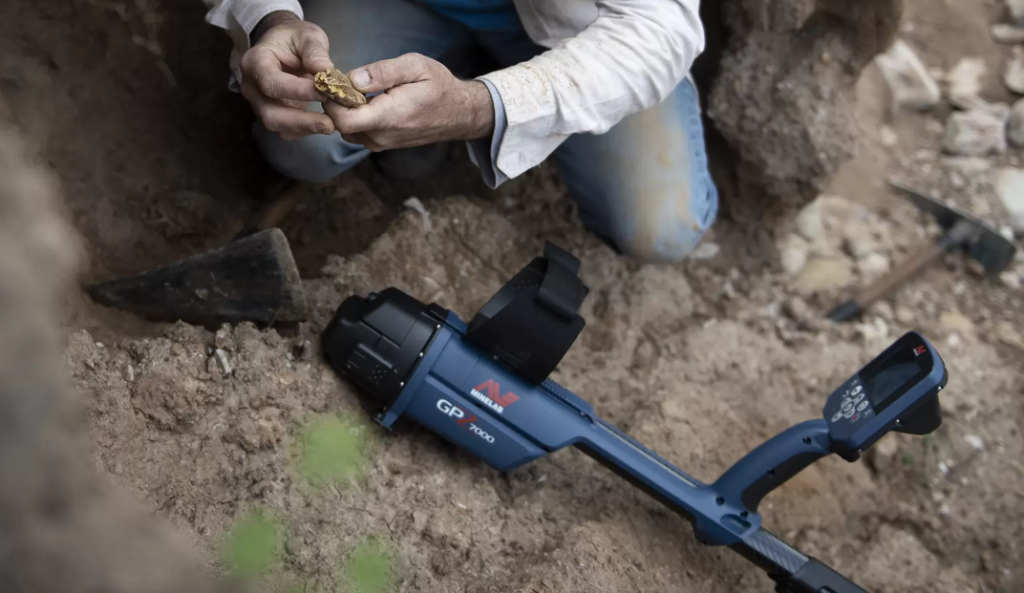
There are a lot of metal detectors for detecting metals and rare items. Here is the list of 5 deepest metal detectors you can consider if you are interested in deep metal detecting. Names of these detectors are:
Minelab GPZ 7000
Garrett ATX
Fisher CZ-21
Minelab CTX 3030
XP DEUS II
These metal detectors are among the best detectors for deep searches, offering advanced technologies and features that allow them to reach greater depths than other models.
Conclusion
In conclusion, the answer to the question “How deep can a metal detector detect? “usually depends on various factors. These factors include the type of metal detector, the size and composition of the target, and the ground conditions. Some advanced detectors can reach a depth of many feet for larger objects.
On the other hand, the depth for smaller items like coins and jewellery typically ranges from a few inches to one foot. To achieve the best possible results, the key is to select the right detector and adjust it to the right settings according to the environment.

